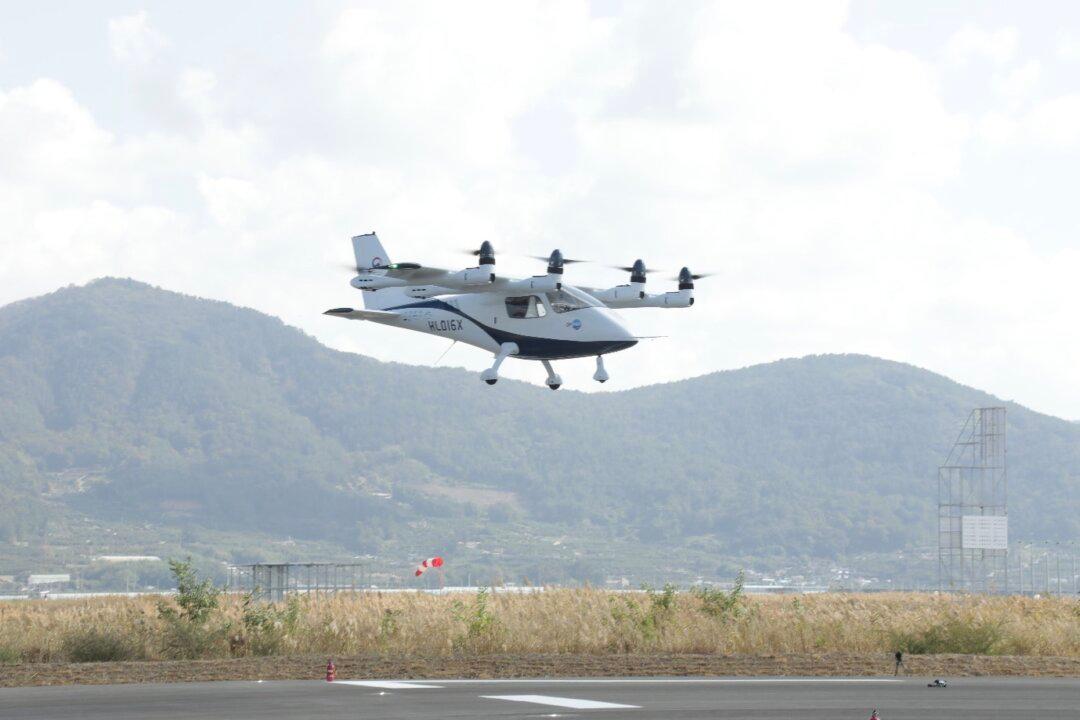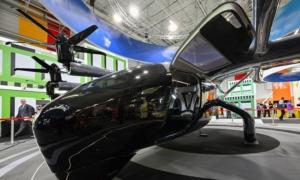An urban air mobility (UAM) system developed by South Korea is expected to reduce travel time significantly in urban areas once in operation.
On Nov. 3, a test flight event for the South Korean UAM (K-UAM) was held at its demonstration base in Goheung County of the Jeollanam-do Province, the southernmost province in mainland Korea.
Hosted by the South Korean Ministry of Land, Infrastructure, and Transport (MOLIT) and organized by the Korean Aerospace Research Institute (KARI), the event showcased various K-UAM components, including aircraft, vertical take-off and landing platforms, traffic management systems, and service systems like terminals, marking the first public presentation of these domestically manufactured facilities in South Korea.
“Korea will open the urban sky in the most liberating way in the world,” said Baek Won Kug, Vice Minister for MOLIT, at the test flight event.

Attendees, guided by narrators, toured various passenger terminal applications of technology and equipment, including the comprehensive control room and noise measurement. They also witnessed a demonstration using South Korean-developed aircraft in the first-ever established UAM operational system in South Korea.
Two aircraft models were tested at the event. SKYLA-V2, one of the two models, has a top speed of 60 mph, a range of up to 16 miles, and a maximum flight time of 20 minutes, while OPPAV, the other model tested on the day, can reach speeds of up to 150 mph, cover distances of up to 31 miles, and have a maximum flight time of 45 minutes.

Following the first-stage test flights in open areas, K-UAM will begin test flights in densely populated areas, including Seoul and its surrounding cities, starting in August next year. This verification process will continue until June 2025. At that time, the travel time required when driving a car for one hour will be reduced to approximately 20 minutes by K-UAM.
According to the passenger boarding process demonstrated at the event, passengers can make reservations through an app by inputting information such as their departure and destination, preferred departure time, and the number of passengers. Upon arriving at the vertical airport at their chosen departure time, they can board the aircraft using facial recognition and new security screening technology.
“With the participation of well-known domestic and international companies, the highly anticipated K-UAM challenge has reached this historic moment,” said Mr. Baek, vice minister for Transport of South Korea, “We plan to develop it into a widely used mode of transportation in city centers for the convenience of citizens by the end of 2025.”
Gong Young-min, Mayor of the Goheung County of the Jeollanam-do Province, delivered a welcoming speech at the event.

Present at the event were representatives from numerous research institutes including the Korea Institute of Aviation Safety Technology, four South Korean universities, as well as more than 250 academic and industry representatives from auto manufacturers such as Hyundai, South Korean telecommunications companies, Incheon International Airport Corporation, Korean Air, and others.





